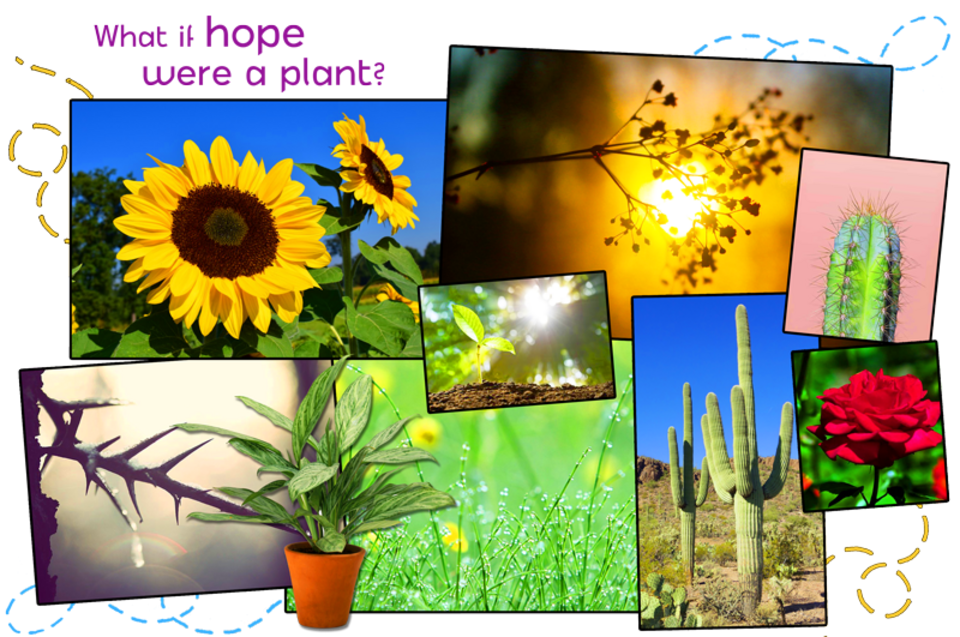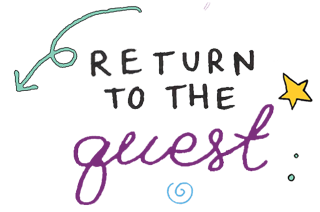
Hope's habitat
This activity is reproduced with permission from the board game "Kookception: Philo at Play" created by our community partner Brila as part of its philocreation approach.
...
| Objective: To expand your concept of hope by stretching it in all directions through fun thinking mini-missions! |
Duration: 15 to 45 minutes
Material:
Sheets of paper and pen
Coloured pencils and markers
Your imagination
Instructions:
Mission 1: Define the concept. Imagine a very curious alien who wants to understand the world of humans, but who doesn't have the same concepts on their planet. How would you explain hope to them by giving a definition of the concept and examples from planet Earth? Keep track of all your ideas because they will be useful for the activities that follow, like Creative Conception and Creative Construction!
Mission 2: Imagine the concept. If the concept of hope were a living creature, what would it look like and why? Close your eyes and visualize how it would act and speak, also thinking about its attitude and life plans. Then imagine that hope was putting together its grocery list for the supermarket. What does it need to eat and why? Does hope eat regular food, like fruits and vegetables, or does it need some weird ingredients—or even ideas!—to keep it nourished? Write out the list of grocery items that hope needs to get to prepare its meals. How different is it from your own grocery list?
Mission 3: Compare the concept. It’s sometimes by making comparisons that you can discover new ideas! In this game of wacky metaphors, your task is to make a connection between the concept and something completely different: If hope were a plant, what kind of plant would it be and why? Describe this plant as if you were an expert hiker on a nature trail with your students: how does the plant of hope look, what does it need to grow, what kind of habitat does it prefer—a sunny spot, lots of rain, some tree friends?
...
Bonus: Are you still overflowing with ideas? Then imagine that the concept of hope lived nearby, and you could sneak into its house to look around. What is its home like and why? What surprises you about how it lives? Are there similarities between its lifestyle and yours? Now, imagine you got caught! Is hope angry or pleased to find you in its house? How does it react and what do you say to defend yourself? If hope were to invite you to stay for a cup of tea or a glass of lemonade, what would you two talk about and why? |
| Bonus plus: If hope were a living creature, that could mean that, just like with humans and other lifeforms, its species has been around for hundreds, even thousands of years. What a strange thought! Can you imagine what a prehistoric version of hope might look like? Think back to the Mission 2 above, and how you visualized the concept of hope as a creature. Now, think of how that creature might have evolved over time, and draw the very first version who first roamed the earth. When did it appear? As far back as the dinosaurs… or more recently? How was it different back then than it is now? What caused it to change and why? |

| Tricks for tots: Sometimes it’s easier to imagine someone’s appearance and personality when we know what they care about! So to help your imagination with this activity, before visualizing hope as a living creature, try to think about what it might find most important in its life. Let’s start with some simple questions: What is hope’s favourite colour and why? What are some of its hobbies? Who are its best friends? Now, picture in your head what hope might choose as its three most favourite things in life. Does that change how hope looks and thinks as a living creature? Add some details to your portrait of hope that showcase what it cares about most! |
| Tips for teens: According to the philosopher Immanuel Kant, hope is really important to our ability to reason as humans since it helps us deal with questions we cannot yet answer through our lived experiences. For Kant, we can relate to hope in three key ways: first, to help us pursue our own happiness; second, to help us become more moral people; and third, to help make all of humanity more ethically minded. In other words, we can use hope to help us in our efforts to be happier, better humans… especially since we need to believe in our own will power in order not to be tempted toward evil, selfish deeds! If you were to apply this perspective to your own life, what hopes could you have to help you improve in these three ways? Can the same hope allow you to be happier and better as an individual, while also improving humanity’s sense of morality? Conversely, could a hope that is good for you individually be bad for the human race more generally? Ask yourself whether or not you agree that hope can help us be morally good. Are there limits to hoping? Why or why not? |
Share your creative reflections by sending them via email.
Include photos of your projects and notes of your thoughts, as well as your first name and your age!


